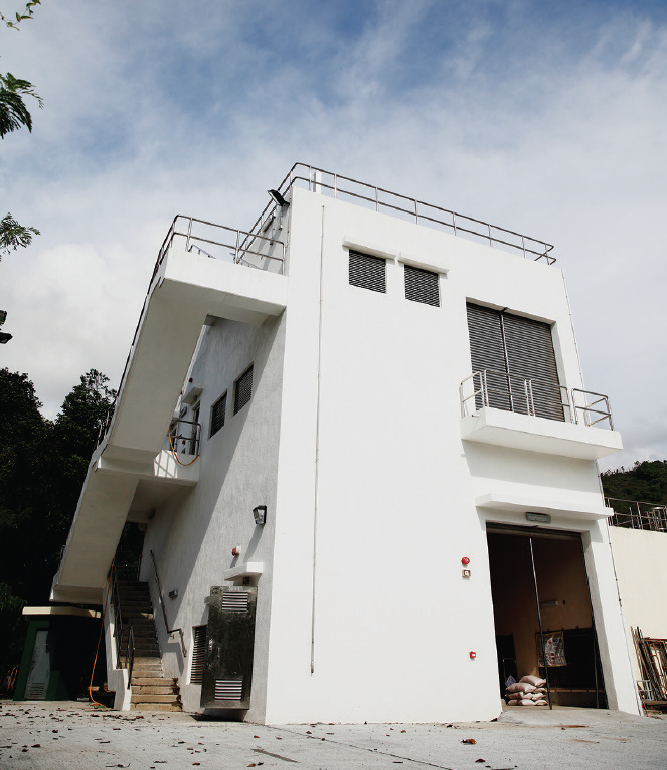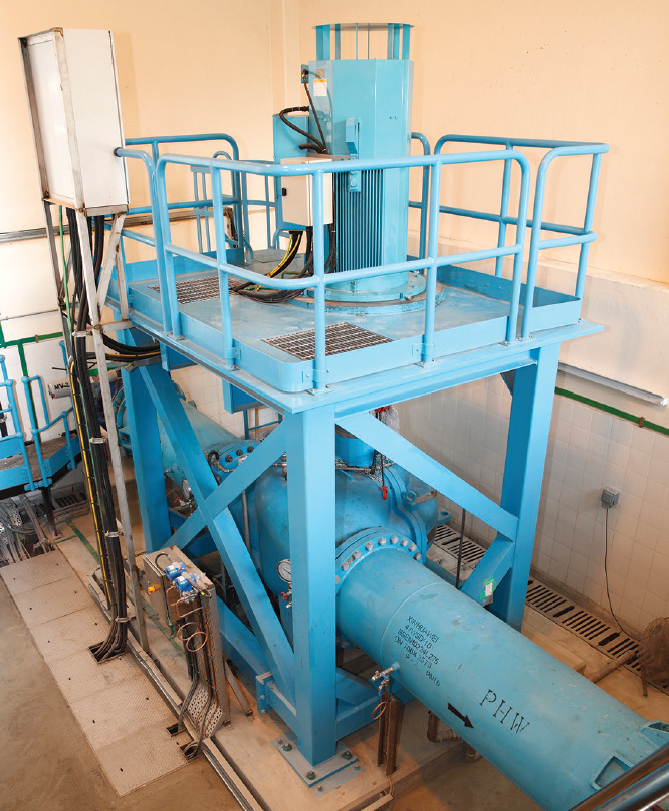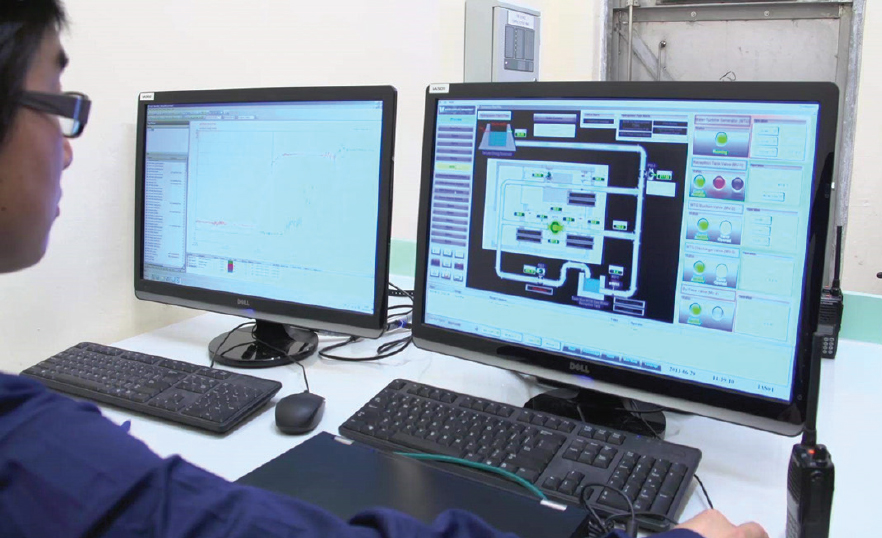Tuen Mun Hydropower Plant and
The Odour Squad
Water Supplies Department
2015
The Water Supplies Department (WSD)'s mission is to provide an adequate and reliable supply of wholesome fresh and sea water to the customers in the most cost-effective way, as well as to remain conscious of the responsibilities towards the environment. With an extraordinary innovative effort, team spirit and special considerations of local geographic landscapes, the WSD built Hong Kong’s first hydropower plant at the Tuen Mun Water Treatment Works (WTW), adopting and utilising renewable energy as well as protecting the environment.
Turning a problem into an opportunity for cost-saving and environmental protection
Due to the rapid population growth in the New Territories West and Lantau Island in recent years, a higher water level has to be maintained in Tai Lam Chung Reservoir to ensure a stable supply of water to its associated WTW. This leads to a sustained high pressure on the inlet valves of the Inlet Reception Tank at the Tuen Mun WTW, which accelerated their normal wear and tear and necessitated more frequent maintenance. The WSD turned this problem into an opportunity and installed two hydropower turbine generators at the WTW. Water from the Reservoir is first diverted to the generators before entering the Tank, thereby transforming the residual water pressure energy into electricity and greatly alleviating the wear and tear problems of the valves. In addition to reducing maintenance costs for the valves, the use of the generators saves the WTW an electricity consumption of about 3 million kWh and reduces 2,000 tonnes of carbon dioxide emissions annually.
Overcoming difficulties one by one with teamwork
The hydropower plant at the Tuen Mun WTW is the first of its kind in Hong Kong. Due to the lack of precedents, the design and construction processes met many obstacles. With regard to the mechanical and electrical equipment, most turbine generators available in the market are only suitable for dams or rivers, but, after many rounds of research and evaluation with a partner pump manufacturer, the WSD found a special kind of turbine generator. In addition, due to the limited available space of the WTW, only an area of about 10 metres by 12 metres could be made available for constructing the hydropower plant. Therefore, the team had to resort to multi-level design for the plant, and install the equipment in two storeys in order to make the most of the limited space. The team also had to ensure that the WTW operation would in no way be affected by the running hydropower plant and they conducted comprehensive risk assessments and tests to the system to make sure the water supply would not be compromised.
The team spirit of various branches of the WSD has also been fully demonstrated in each phase of the project. The Development Division made plans for maintaining a high enough water level at the Reservoir to suit the operational need of both the WTW as well as the hydropower plant. The multi-storey building design for the plant as proposed by the Mechanical and Electrical Projects Division was adopted by the Construction Division. The Regional Operations Section and Mechanical and Electrical Maintenance Division have ensured that the operation of the WTW will not be impaired during the project as well as the operation phases of the hydropower plant.
The construction of a hydropower plant at a WTW is an innovative project not commonly found elsewhere in the world. The team has successfully overcome the hurdles and optimised the operation and the energy generation process. The experience gained will be valuable in building similar hydropower plants in future.



